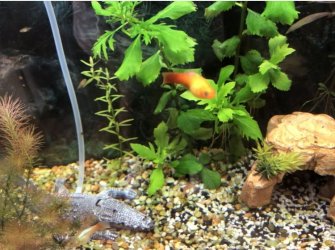Platyfishwoo
New Member
I have had my female platy Dora for about 3 months now.
She was all good at first but over the last few weeks I’ve noticed her top fin looking weird, almost like it was going transparent.
I’ve also noticed she’s very skinny (she’s a sunset so maybe just the type?) compared to my other females that are quickly our growing her.
Over the last week she’s been hiding more. She is still active most of the time but today I noticed she would get a piece of food in her mouth and immediately spit it back out.
Her fins are also clamped a lot of the time. My water parameters are fine. 0 ammonia, 0 nitrite and nitrate 10
I have attached photos to help
She was all good at first but over the last few weeks I’ve noticed her top fin looking weird, almost like it was going transparent.
I’ve also noticed she’s very skinny (she’s a sunset so maybe just the type?) compared to my other females that are quickly our growing her.
Over the last week she’s been hiding more. She is still active most of the time but today I noticed she would get a piece of food in her mouth and immediately spit it back out.
Her fins are also clamped a lot of the time. My water parameters are fine. 0 ammonia, 0 nitrite and nitrate 10
I have attached photos to help



